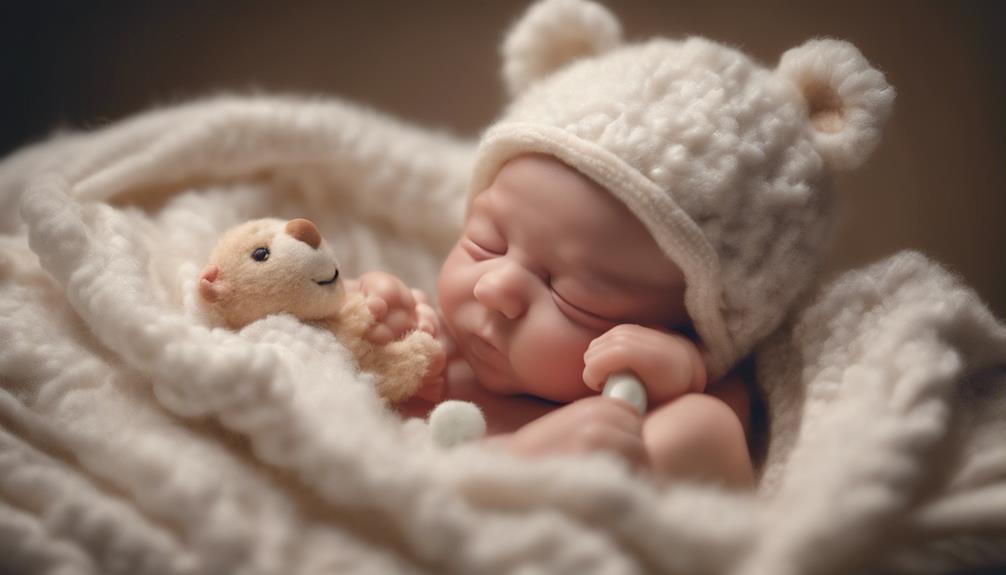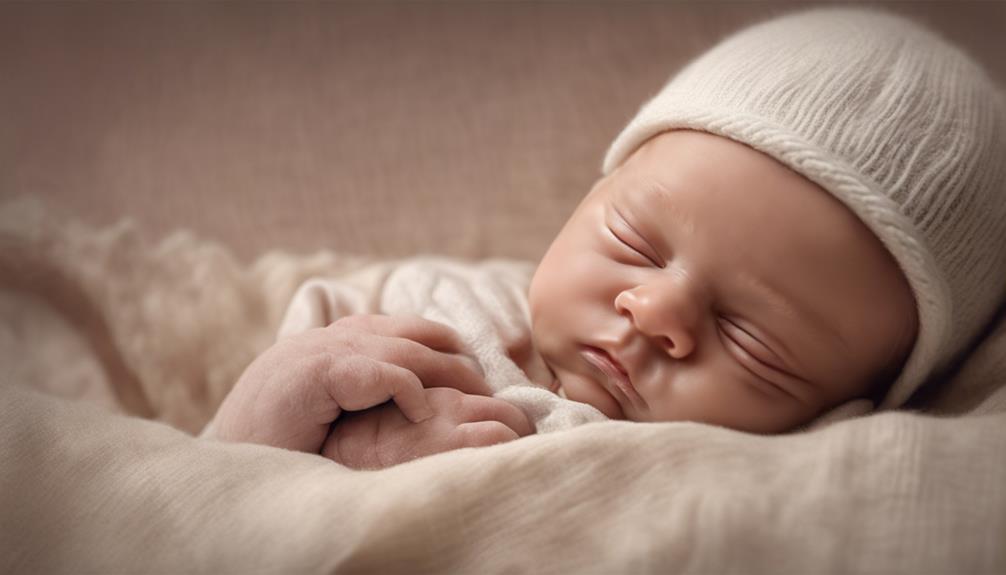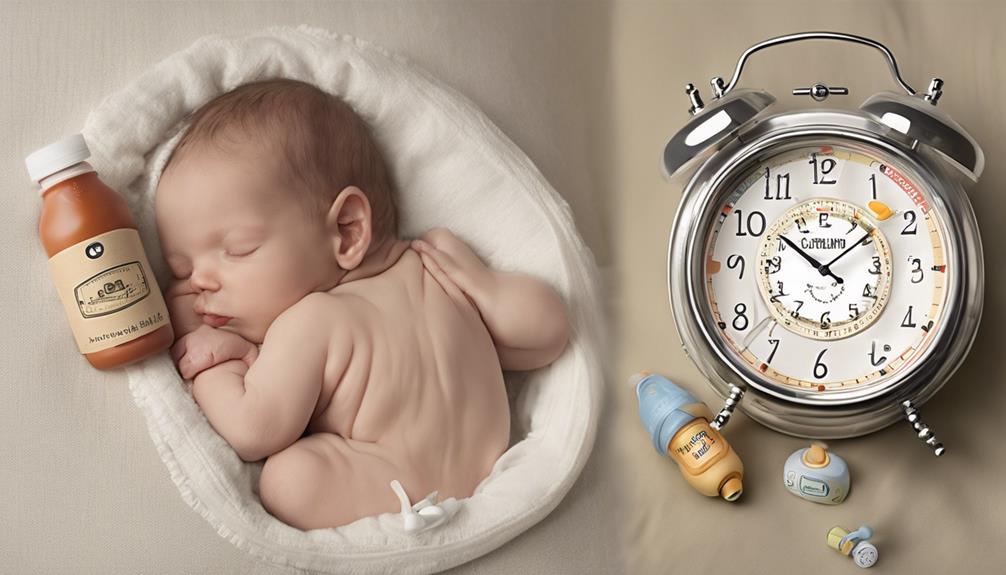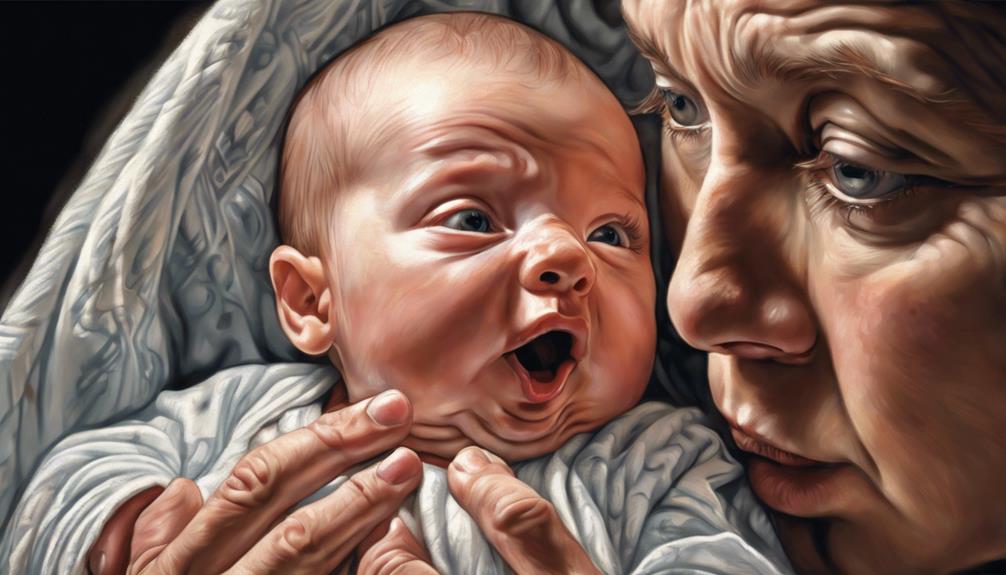Caring for a newborn’s umbilical cord stump is essential, but knowing the do’s and don’ts can sometimes be overwhelming.
Understanding the intricacies of umbilical cord stump care is essential for ensuring your little one's well-being, but where do you start?
Let's unravel the mystery behind newborn belly button care and discover the best practices to keep your baby healthy and happy.
Key Takeaways
- Proper care reduces infection risk and promotes healing.
- Gently clean with warm water, avoid harsh chemicals.
- Recognize signs of infection: redness, swelling, foul smell.
- Seek medical attention for concerning symptoms promptly.
Importance of Belly Button Care
Maintaining proper care of a newborn's belly button is crucial for reducing the risk of infection and promoting healing. When a baby is born, the umbilical cord is clamped and then cut, leaving behind a stump that eventually falls off, leaving the baby's belly button. This area is delicate and requires special attention to keep it clean, dry, and exposed to air. By ensuring the baby's belly button is well taken care of, we can prevent complications and aid in the natural healing process post-stump detachment.
It is important to consult with a healthcare provider, such as a pediatrician or a health nurse, if there are any concerns about the baby's belly button. Early detection of any issues can lead to prompt treatment, ensuring the baby's health and well-being. By following good hygiene practices and keeping the belly button area clean and dry, we can help promote a smooth healing process and reduce the chances of infection. Remember, a little care goes a long way in ensuring the baby's belly button heals properly.
Cleaning the Umbilical Cord Stump

When caring for a newborn's umbilical cord stump, it's crucial to gently clean it with warm water and a soft washcloth. Here are some tips to guarantee proper care for your baby's belly button area:
- Use Warm Water: Gently wipe around the base of the stump with warm water to keep the area clean and dry.
- Avoid Harsh Chemicals: Refrain from using rubbing alcohol or harsh cleansers that could irritate the sensitive skin around the umbilical area.
- Make Sure Complete Drying: After cleaning, pat the area gently with a soft cloth to make sure it's completely dry and promote healing.
- Let It Fall Naturally: Allow the umbilical cord stump to fall off on its own. Don't rush the process by pulling or forcing it, as this could lead to infection.
Promoting Natural Healing Process
To support the natural healing process of your newborn's belly button stump, it is important to keep the area dry and exposed to air. This simple step can aid in the healing journey without the need for any additional products. Here is a helpful guide to promote the natural healing of your newborn's belly button:
| Tips for Natural Healing | Description | Benefits |
|---|---|---|
| Keep it Dry | Avoid moisture by gentle patting dry | Prevents infections |
| Expose to Air | Let the area breathe freely | Speeds up the healing process |
| Practice Sponge Baths | Use damp cloth for gentle cleaning | Maintains cleanliness effectively |
Recognizing Signs of Infection
Recognizing signs of infection in your newborn's belly button area is essential for ensuring their health and well-being during the healing process. As you care for your baby's umbilical cord stump and belly, it's important to be vigilant for any indications of potential infection. Here are some key points to help you recognize signs of infection in your baby's belly button area:
- Look out for redness, swelling, tenderness, or a foul smell in the area around the stump.
- Pay attention to any thick yellow fluid oozing from the umbilical area, as it can be a sign of infection.
- Contact the healthcare provider if there's persistent or worsening bleeding from the stump after three days.
- If your baby shows signs of infection such as fever, tiredness, or poor feeding, seek advice from a healthcare professional promptly.
Being aware of these signs and symptoms will help you take prompt action to make sure your baby receives the necessary care. Remember, if you have any concerns about your baby's umbilical cord stump, seeking guidance from a healthcare provider, like Children's Hospital, is always a wise decision.
Seeking Medical Attention if Needed
If your newborn exhibits any concerning symptoms such as fever, unusual tiredness, or poor feeding habits, it's essential to promptly seek medical attention from a healthcare provider.
While caring for your newborn's umbilical cord stump, it's critical to keep an eye on the area for any signs of infection. If there's persistent bleeding from the stump after three days, thick yellow fluid oozing from the umbilical area, redness, tenderness, swelling, or a foul smell around the belly button stump, contact your doctor immediately.
Additionally, if the umbilical stump hasn't fallen off after three weeks, it's advisable to seek medical advice for evaluation and possible treatment. Remember to keep the stump clean and dry by exposing it to the air and folding your baby's diaper below the stump.
Your healthcare provider is there to help and make sure your newborn's belly button heals properly, so don't hesitate to reach out if needed.
Frequently Asked Questions
What Should I Put on My Newborns Belly Button?
We should only use water and mild soap for cleaning our newborn's belly button. Let it air dry to heal naturally. Avoid powders, ointments, or creams as they may hinder healing. Keeping it clean and dry is important.
How Do You Care for a Baby's Belly Button After the Cord Falls Off?
We gently clean around the belly button with warm water and a soft cloth, ensuring it stays dry. We avoid submerging it in water until fully healed, monitoring for signs of infection and seeking medical help as needed.
When Should I Worry About My Newborn's Belly Button?
If your newborn's belly button hasn't healed in three weeks, shows signs of infection like fever or oozing fluids, or bleeds excessively after the stump falls off, seek medical advice promptly. Your baby's health is our priority.
How Often Should I Clean My Baby's Umbilical Cord?
We clean our baby's umbilical cord stump 1-2 times daily with warm water and a soft cloth, ensuring it stays dry. We avoid alcohol or powders on the area. If concerned, we contact our healthcare provider promptly for guidance.
Conclusion
Let's embrace the delicate dance of nurturing our newborn's belly button, like a gardener tending to a fragile flower.
By gently cleaning and allowing nature to heal, we can watch as the umbilical cord stump transforms and detaches, like petals unfurling in the warm sun.
Remember, our vigilant care is the key to ensuring our little one's belly button stays healthy and infection-free.
Together, we can guide them on their journey to utmost well-being.










